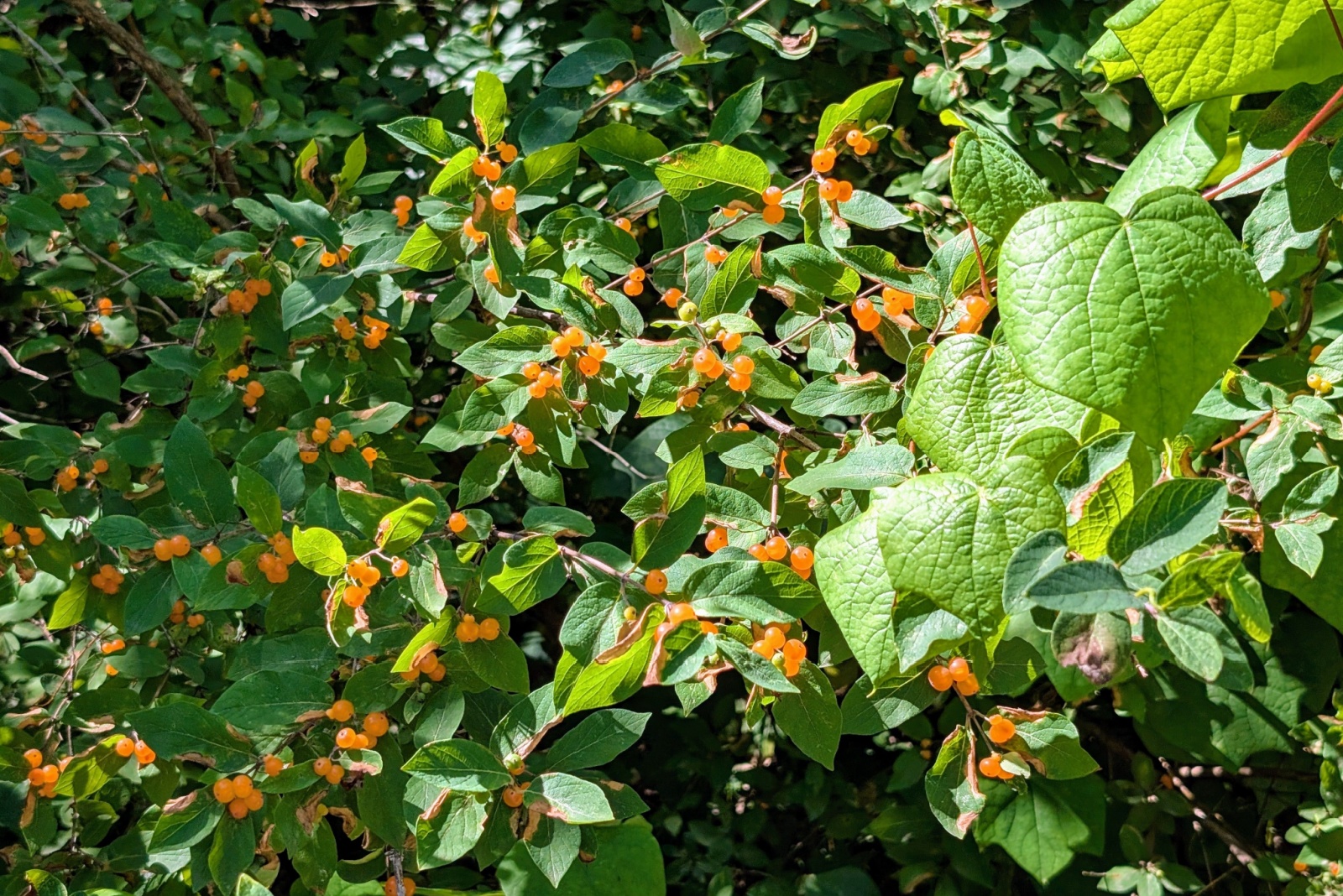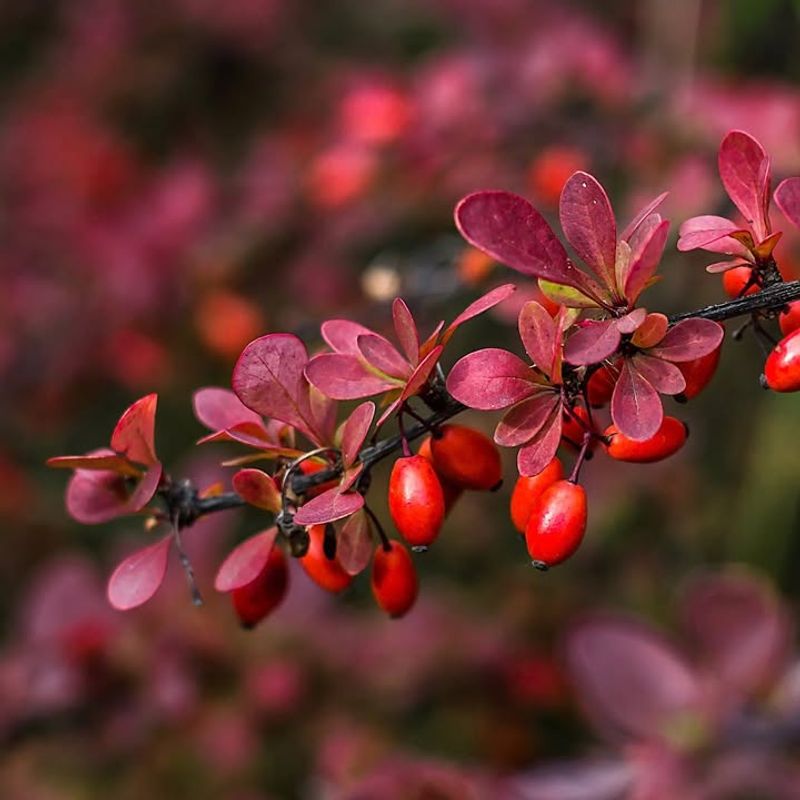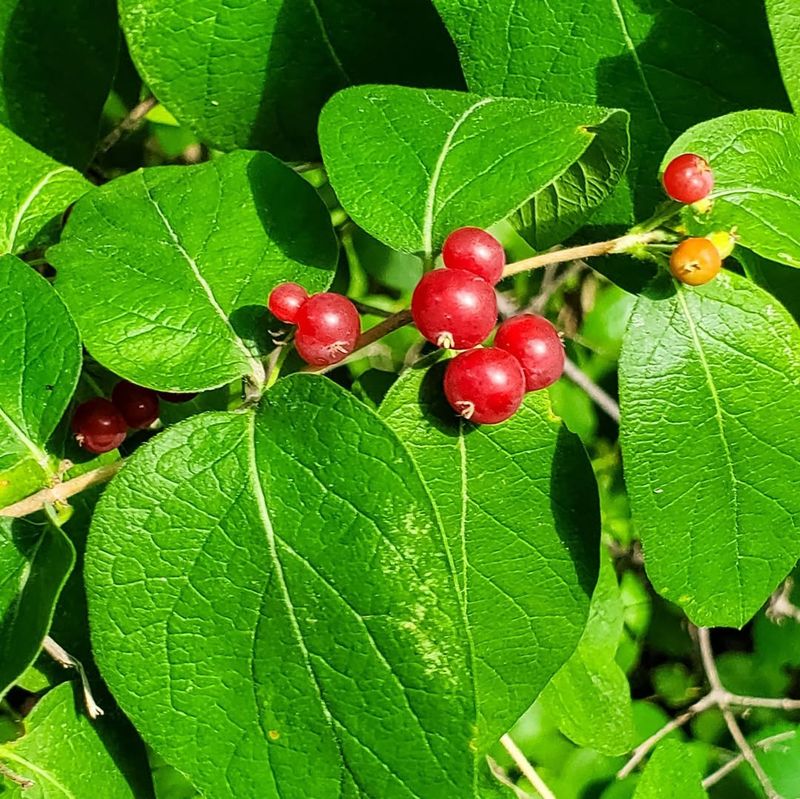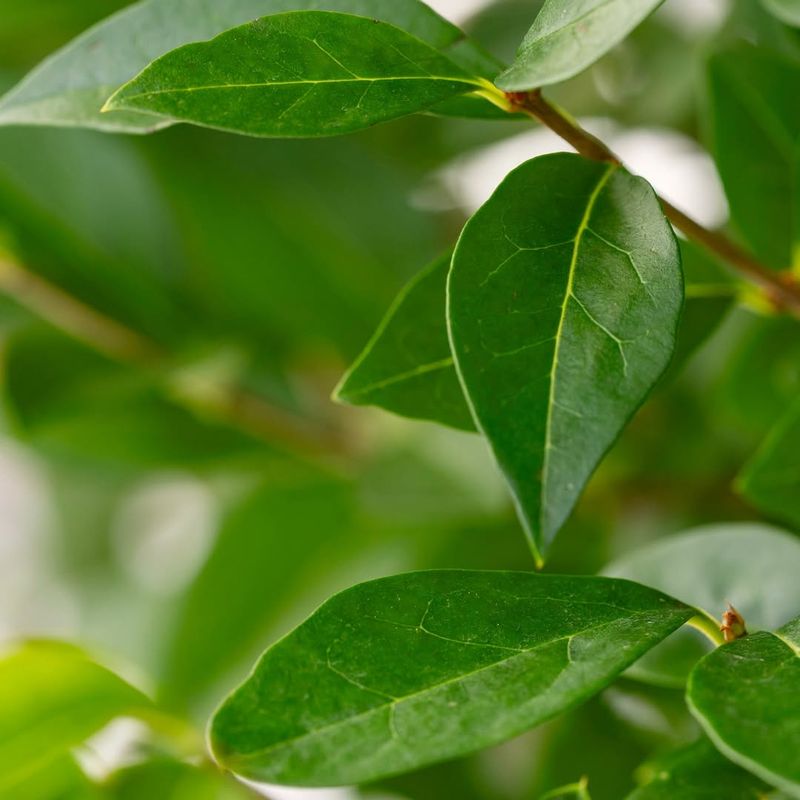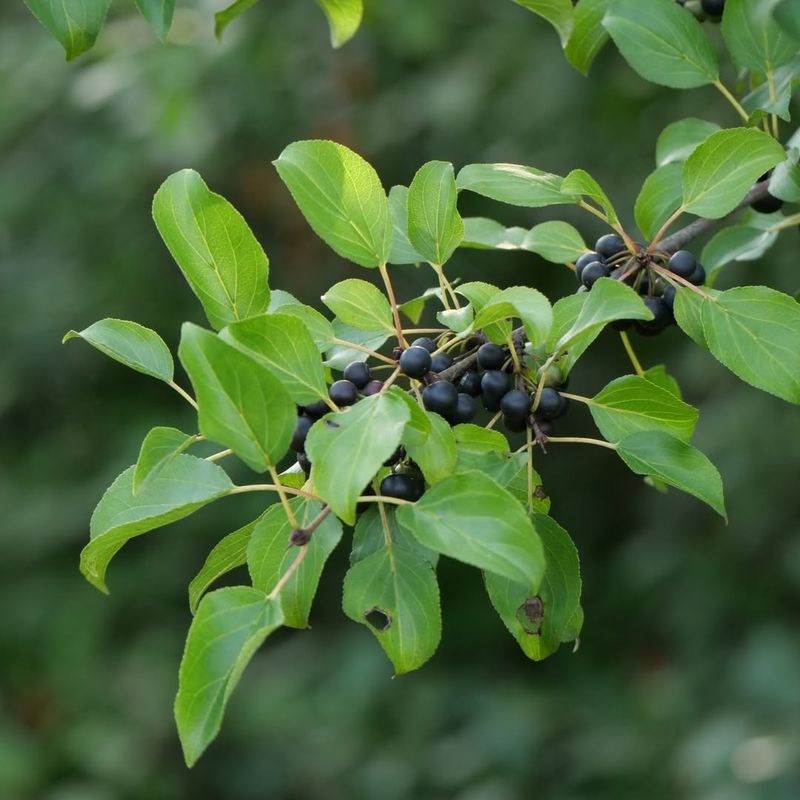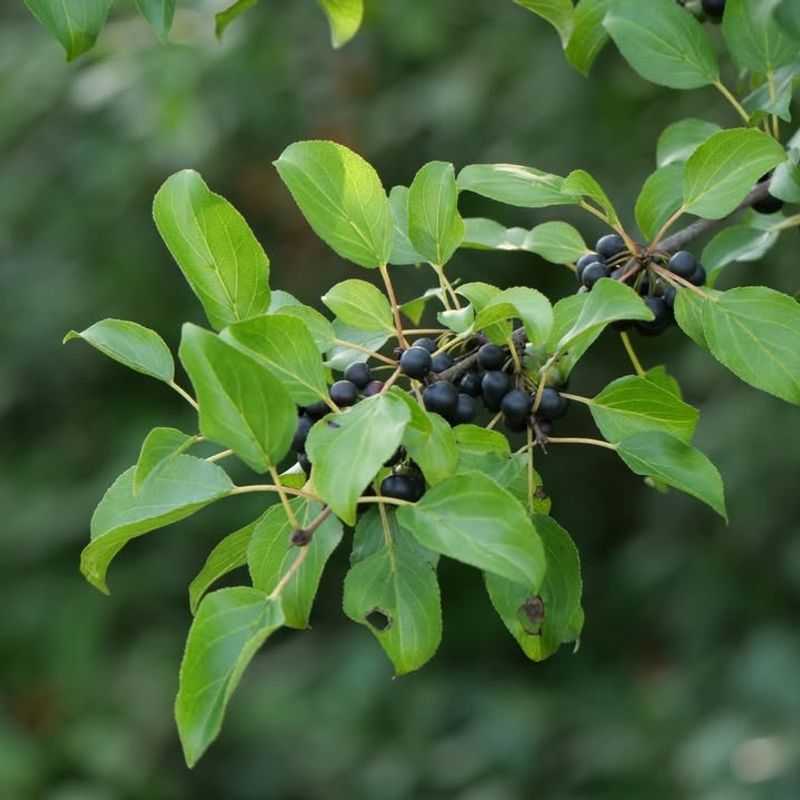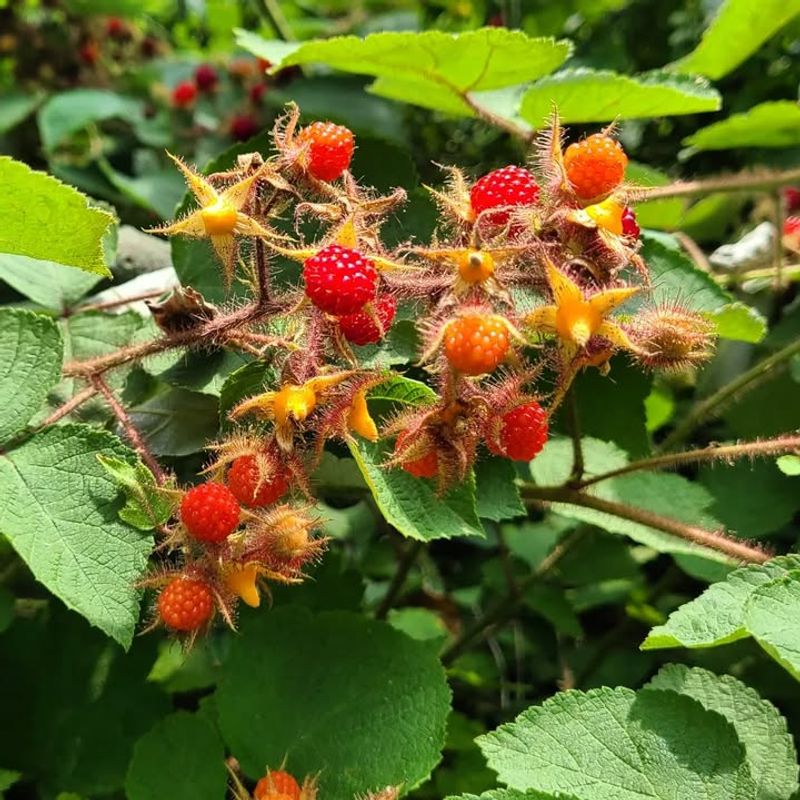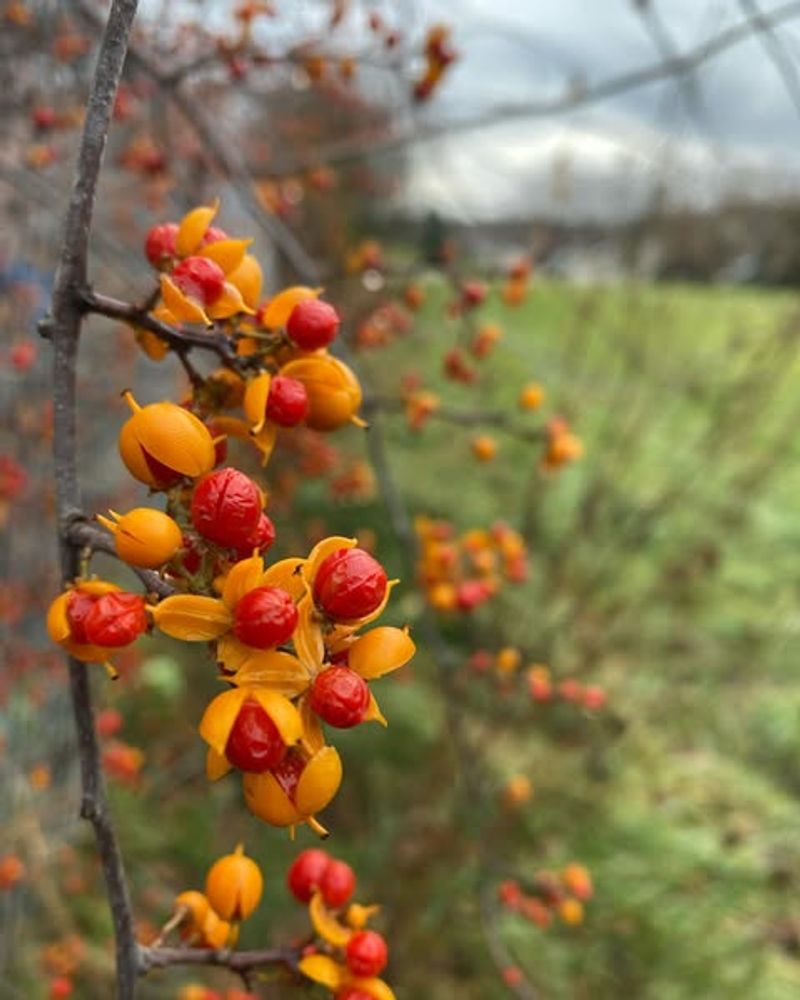Planting berry bushes in your Ohio garden might seem like a great idea for fresh fruit and wildlife habitat. However, some berry plants can quickly escape your yard and take over natural areas, crowding out native species that local animals depend on.
Understanding which berry bushes to avoid helps protect Ohio’s ecosystems while keeping your landscape manageable and beautiful.
1. Autumn Olive
Originally brought from Asia to prevent soil erosion, autumn olive has become a serious problem across Ohio. Its silvery-green leaves and abundant red berries make it easy to spot along roadsides and fields.
Birds love eating the berries and spread seeds everywhere, allowing this aggressive shrub to quickly dominate entire hillsides. Once established, it forms dense thickets that block sunlight from reaching native plants underneath, completely transforming natural habitats into monocultures that offer little value to local wildlife.
2. Multiflora Rose
With its clusters of pretty white flowers in spring, multiflora rose might look charming at first glance. Ohio farmers once planted it as living fences to contain livestock, but that decision backfired spectacularly.
Sharp thorns and arching canes create impenetrable barriers that wildlife and people struggle to navigate through. Each plant produces thousands of tiny red berries that birds scatter across the landscape, establishing new colonies that choke out valuable native vegetation and reduce pasture quality for grazing animals significantly.
3. Japanese Barberry
Ohio garden centers still sell this compact shrub for its colorful foliage and neat appearance in landscaping designs. Red berries dangle beneath spiny branches throughout fall and winter, providing food for birds that distribute seeds into forests.
Research shows that barberry thickets create perfect humid conditions where deer ticks thrive, increasing Lyme disease risks for people and pets. Native woodland wildflowers disappear when barberry takes over, fundamentally altering forest floor ecosystems that took centuries to develop naturally.
4. Tatarian Honeysuckle
Sweet-smelling pink or white flowers make Tatarian honeysuckle seem like a wonderful addition to any yard during late spring. Bright red or orange berries follow the blooms, attracting hungry birds throughout summer months.
Unfortunately, these berries have lower nutritional value than native alternatives, essentially serving as junk food for wildlife. Dense growth blocks light and moisture from reaching native plants below, while shallow roots destabilize stream banks and increase erosion problems throughout Ohio’s watersheds and natural areas.
5. Amur Honeysuckle
Leafing out earlier than native shrubs and keeping foliage later into fall gives Amur honeysuckle an unfair competitive advantage. Cream-colored flowers turn into glossy red berries that seem beneficial but actually harm local ecosystems significantly.
Birds eating these berries produce droppings that spread seeds far and wide, creating new infestations rapidly. Songbirds nesting in honeysuckle bushes experience higher predation rates because the dense branching patterns make nests easier for predators to locate and raid successfully.
6. Morrow’s Honeysuckle
Closely related to other invasive honeysuckles, Morrow’s honeysuckle shares many problematic characteristics while adding its own unique challenges. White flowers gradually fade to yellow before producing dark red berries in late summer.
Hybridization between different honeysuckle species creates even more aggressive varieties that resist control efforts. Shady Ohio forest understories become completely dominated by honeysuckle thickets, eliminating diverse native shrub layers that provide crucial habitat for insects, birds, and small mammals that depend on specific native plant relationships for survival.
7. European Privet
Commonly used for formal Ohio hedges because it tolerates heavy pruning, European privet escapes cultivation when birds eat its black berries. Small white flowers bloom in early summer with an unpleasant odor that many people find overwhelming.
Seeds remain viable in soil for years, making eradication extremely difficult once populations establish themselves. Privet thickets exclude native shrubs that would normally provide better food sources and nesting sites, essentially creating biological deserts where diverse native plant communities once flourished naturally.
8. Common Buckthorn
Dark glossy leaves stay green longer than most native plants, giving buckthorn extra time to photosynthesize and outcompete neighbors. Black berries act as powerful laxatives for birds, causing them to spread seeds quickly across wide areas.
Allelopathic chemicals released from buckthorn roots actually poison the soil, preventing other plants from growing nearby successfully. Forest edges and wetland borders become completely transformed when buckthorn invades, eliminating the gradual transition zones that provide essential habitat for species requiring specific environmental conditions.
9. Glossy Buckthorn
Tolerating wet soils better than its relative common buckthorn, glossy buckthorn specifically threatens Ohio’s wetlands and stream corridors. Berries change from red to black as they ripen, providing food for birds throughout the growing season.
Wetland ecosystems suffer tremendously when buckthorn replaces native shrubs like dogwoods and viburnums that provide superior wildlife value. Water quality declines as diverse wetland plant communities disappear, reducing natural filtration systems that protect streams, lakes, and groundwater from pollution and excessive nutrient runoff.
10. Wineberry
Resembling native raspberries but covered in distinctive red bristly hairs, wineberry produces tasty orange-red fruits that people and wildlife both enjoy eating. Arching canes root wherever tips touch the ground, allowing rapid vegetative spread through Ohio forests.
Native raspberry species get crowded out when wineberry establishes dense colonies along forest edges and trails. Thorny thickets become nearly impossible to walk through, limiting access to natural areas while providing minimal ecological benefits compared to the diverse native berry-producing plants that wineberry replaces.
11. Oriental Bittersweet
Vigorous twining vines climb trees and structures, producing clusters of yellow capsules that split open to reveal bright orange-red berries. Birds attracted to these colorful fruits spread seeds into natural areas where vines begin their destructive growth patterns.
Heavy vines girdle and eventually kill mature trees by blocking sunlight and adding tremendous weight to branches. Native American bittersweet, a well-behaved relative, gets outcompeted and hybridized with this Asian invader, threatening the survival of Ohio’s native bittersweet populations throughout their natural range.

